It is a common-place assumption that brains generate consciousness. The fact that brain damage, drug use, sleep deprivation, etc., impair thinking seems to confirm the brain’s generative capacity. However, how a physical mechanism could generate subjective experience is entirely unknown. In fact, the existence of top down causation — where the mind affects the brain and body — is inconsistent with the notion. Although normally correlated, consciousness exists when the brain is not functioning, and in the case of some living organisms, also in the absence of brains all together. This may well be why brain science has done little to explain the mystery of consciousness and may never succeed in doing so.
Part I
The Relationship Between Brains, Consciousness and Intelligence
Brains and a nervous system (per se) are not necessary for memory or evaluation. Consider the stentor raesilii which are a trumpet-shaped single-celled organism [See: Plate 1 in the Schedule]. If they are disturbed, they withdraw themselves out of harm’s way. If the stimulus appears to be harmless, the Stentor will quickly cease to react to the stimulus in a process called “habituation.” If the stimulus is a threat, then it appears the Stentor will increase the speed of retraction in a process called “sensitization.” If the negative stimulus continues, eventually the Stentor will swim away and attach itself elsewhere.
The slowing down of retraction and then its ignoring the stimulus is not due to the depletion of chemical resources. This is proven with sensitization, where the reaction times actually increase.1 Thus, Stentors exhibit what appears or could at least be described as some rudimentary form of memory, and even a process of seemingly rational decision making. They evaluate the stimulus, change their reactions depending on the assessed risk, remember what happened last time and decide to try living somewhere else if the negative stimulus is too prolonged and threatening all without a brain or nervous system.
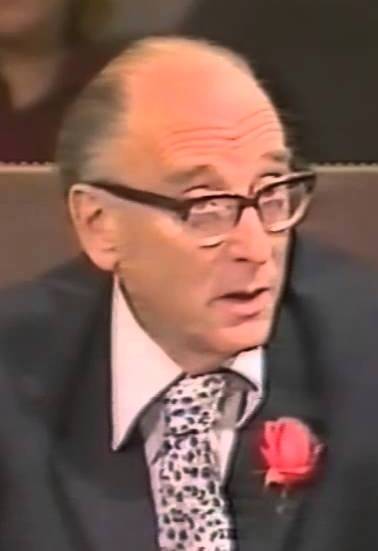
John Lorber (1915-1996)
In “Is Your Brain Really Necessary?” Roger Lewin discusses a paper of the same name which was presented by John Lorber, who writes about several remarkable cases of hydrocephalus.2 This condition occurs when spinal fluid leaks into the skull in utero and prevents the brain from developing in the normal fashion. [Plate 2, Schedule] In some cases, this results in severe mental retardation, but in other instances the people suffering from hydrocephalus have 95% of their brain missing and are actually of above average mental functioning with no deficits whatsoever. In other instances, children who have had half their brains removed due to chronic epilepsy have gone on to make a full recovery and to have all the normal mental functioning of anybody else. In light of the above, the popular belief which holds that the brain is central to the individual’s functionality or sense of self, seems to require at least some level of qualification.
Consider also brain plasticity, which is exhibited by stroke victims where parts of the brain are repurposed, and lost mental functions become performed by portions of the brain that once dealt with other tasks.3 This is achieved simply by a combination of merely wanting to regain an old ability and by trying to perform this ability repeatedly. But if parts of the brain can be repurposed, it means that there is not much point in trying to understand why one part of the brain does something different from another part of the brain. This is related to the fact that how one brain performs a particular task can be different from how another brain does it. Even the neurons that control the left and right ears of mice are in different parts of the brain and differ from mouse to mouse.4
This means that brain science has a big data problem. “Big data” is the term used to refer to masses of collected data that have no obvious meaning. No one has been able to come up with a theory that makes sense of it all. Since “data” is relative to a scientific theory or hypothesis, where neither theory nor hypothesis exist, “data” cannot be seen as constituting real knowledge, or anything very meaningful at all.
Part II
Placebos and Nocebos
Philosophers refer to top down causation and bottom up causation. Bottom up causation occurs when physical factors affect the mind – such as sleep deprivation, or alcohol and caffeine consumption. Top down causation is when the mind affects the brain and the rest of the body. This occurs, for instance, when people get emotionally upset by what someone has said, raising blood pressure and increasing respiration. Brain plasticity is an example of top down causation.
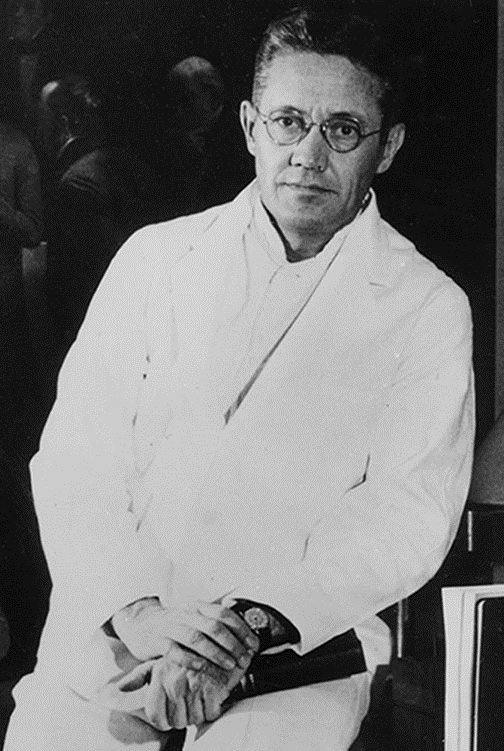
Henry K. Beecher (1904-1976)
If mind were simply a product of brain function with the brain being a machine that produces consciousness, then it should not be possible for the mind’s wishes to turn around and affect what is producing it. Placebos and nocebos provide a striking example of this kind of top down causation.
Henry K. Beecher accidentally discovered placebos in World War II. Having run out of morphine, he injected wounded soldiers with saline solution telling them it was morphine. This had exactly the same pain-killing affect that actual morphine does. It is now known that placebo painkillers work on exactly the same physical principles as ‘real’ painkillers. Both function by releasing dopamine into the brain. This means that the recipients of placebo painkillers do not just falsely think that the pain has been reduced when it has not. The pain really is reduced.
Materialist scientists recognized the mind over matter implications of placebos and many of them steadfastly rejected their existence for many years. Unfortunately for them, the placebo effect is very real and stands up to experimental verification. It is repeatable and publicly observable. In fact, placebos are now a mandatory part of drug testing. It is sometimes mistakenly thought that giving someone a placebo is giving them ‘nothing’. However, as has just been seen, placebos result in real physical effects. Thus, a controlled drug experiment would have to include three parts – the drug to be tested, a placebo, and literally nothing.
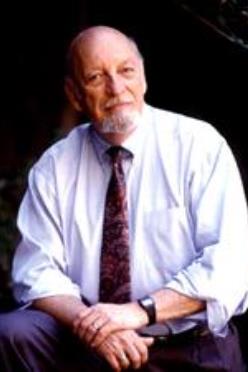
Robert Ader (1932-2011)
Nocebo is the name given to a placebo that has negative effects. In a well-known experiment reported in the article “Behaviorally Conditioned Immunosuppression” by Robert Ader and Nicholas Cohen, rats were given sugar water with a drug that suppresses the immune system. All the rats were sickened and half died. The remaining rats were then nursed back to health. They were then fed the sugar water with no added drug. Half of the recovered rats died as a result and all were sickened.5 This means that a mere belief or association can be enough to kill a creature. It is definitely mind over matter – a phrase that when repeated by one of my students in her psychology class reduced the professor to a fit of apoplexy.
It now appears that most or all of the efficacy of anti-depressants is the result of the placebo effect. Irving Kirsch in “Antidepressants and the Placebo Effect” shows that if antidepressants outperform placebos at all, it is probably due to antidepressants having some rather horrible side effects, such as nausea.6 This means that patients and doctors are frequently able to tell whether patients are receiving the ‘real’ drug or the placebo, effectively increasing the placebo effect for the ‘real’ drug.
Part III
Near Death Experiences
Near Death Experiences (herein NDEs) are also not consistent with the notion that the brain produces consciousness rather than being merely the usual means that mind interfaces with physical reality. Pim van Lommel’s Consciousness Beyond Life is an excellent scientifically-minded book on the subject.7 Van Lommel is a Dutch cardiologist and his work on NDEs has been published in The Lancet, the premiere British medical journal. He is at pains to show why many objections to the existence of NDEs are ill-informed and scientifically unsound. Oftentimes these ‘objections’ are merely ad hoc musings with no evidential support and, in many cases, in contradiction with the known facts.
Some of the important features of NDEs include the fact that some people who were blind from birth experience perfect vision during an episode.8 This is particularly interesting because if sight is restored to someone blind from birth under normal conditions, their brains are unable to make sense of the unfamiliar sensory input.9 Moreover, NDE experiences are typically hyper lucid, faster, clearer, more ‘real’ seeming, than everyday experience, with good memory formation.10 None of these facts is consistent with the notion that NDEs are the result of oxygen deprivation which results in hazy experiences and interferes with memory formation.
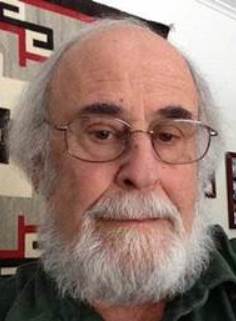
Nicholas Cohen
Many NDEs contain verifiable perceptions, such as the story of a comatose patient who identified the man who had removed his false teeth while the patient was in a coma and asked him where he had put them.11 Likewise, in the famous case of Pam Reynolds, she was able to identify the music playing in the operating theater, the tools used to open her cranium and the conversations had by the medical personnel during the operation. This, while her eyes were taped shut and ‘clickers’ in her ears. Most importantly, her brain also had zero electrical activity at the time.12
NDEs are unlikely to be a human invention since there is large cross-cultural agreement about their features and their existence. Tibetan Buddhists, Plato’s story of Er, adherents of Judaism, Jainism, Islam, Hinduism and Christian mystics have reported similar phenomena to NDEs, including life review. Children who have not heard of NDEs have had them; sometimes meeting dead relatives or friends who they did not know were dead.13 Blind people seeing, verifiable perceptions, cross-cultural agreement and children’s NDEs mean that the notion that NDEs are hallucinations is not sustainable.
NDEs can include an out of body experience, an awareness of being dead, positive emotions, moving through a tunnel, the observation of colors, the observation of a celestial landscape, and the presence of a border with an awareness that if this border were crossed, it would not be possible to come back.14 Most importantly, NDEs cannot be the product of residual, undetectable brain function during cardiac arrest and therefore not detectable by an EEG. This is because of certain scientific facts concerning brain function.
Muscles store glycogen, but the brain does not. The brain cannot operate without oxygen and blood flow. If the heartbeat is not immediately restored, there is a complete loss of all electrical activity in the cerebral cortex. This is always the result in between 10 and 20 seconds (15 sec. average).15 The first result of the absence of blood flow is a neuron’s inability to maintain its membrane potential, resulting in a loss of neuronal function.
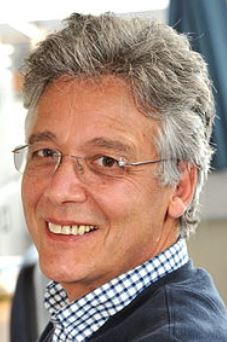
Irving Kirsch (b. 1943)
The acute loss of electrical and synaptic activity in neurons can be seen as the cell’s inbuilt defense and energy-saving response. The remaining energy sources can be briefly deployed for the cell’s survival, for just a few minutes. The joint and simultaneous activity of the cerebral cortex and brain stem is a prerequisite for brain associated consciousness as shown by MRIs.16
Blood flow to the brain during resuscitation is not enough to restore consciousness. Consciousness with no EEG reading should not be possible if consciousness were always dependent on brain activity. Upon resuscitation, it takes between hours and several days for an EEG to return to normal. Recovery of consciousness takes from between 5 minutes, to 72 hours, with a mean time of 6 hours. Until this occurs, the brain mostly flatlines.17 So NDEs are not the result of brain activity as one is being resuscitated. NDEs are not related to medications, the duration of a cardiac arrest, the duration of unconsciousness, a fear of death, the standard of education, religious beliefs or religion, or familiarity with the notion of NDEs.18
Deathbed visitations are also common, where within a week or two of death a dying person experiences a visit from a loved one who has predeceased him. In many cases the visitor is invisible to others in the room and the dying person seems to be interacting with thin air.19 In other cases, the visitors are visible to the attending doctors and nurses and have been picked out of photos that include large groups of people.20 So, for instance, a nurse says “this is the person I saw” and points at what turns out to be the dead husband of the dying patient. The dying patient confirms that this is who visited her.
Part IV
So What is Consciousness if Not Something Produced by Brains?
Consciousness is ultimately one and indivisible. Not being physical, it has no borders or boundaries. It is not a thing. It is that in which things arise. It is that with which we are most intimately familiar and yet it is a mystery. It is a light that shines through the eyes of all sentient beings, plants and atoms too; in all Nature. Of one being with the Father, Creation is a thought that shares in the divinity and sacredness of its Source, hence it has intrinsic value, providing the basis for ethics.
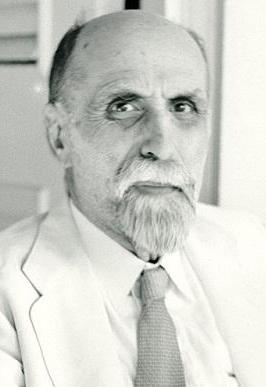
Juan Ramón Jiménez (1881-1958)
Life on Earth is a school in which the soul and ego are buffed and polished to try to let the light shine through. Or as Plotinus puts it, we sculpt the soul through suffering; slowly, painfully eliminating that which is not beautiful in the pursuit of happiness. Plotinus’ question – why do we love the beautiful? – is profound. His answer: Beauty, Truth and Goodness attract us as reminders of our true home; of our origin. The made seeking its Maker.
Plotinus points out that Plato’s Cave identifies four levels; the physical, mind (psyche), soul (nous) and the One (the Form of the Good). The mind is the self, the ego; thoughts and feelings that come and go. The Transcendental Self is the soul.
I am not I
Juan Ramón Jiménez
I am not I.
I am this one
Walking beside me whom I do not see,
Whom at times I manage to visit,
And whom at other times I forget;
The one who remains silent when I talk,
The one who forgives, sweet, when I hate,
The one who takes a walk where I am not,
The one who will remain standing when I die.
A time must be found when the mind shuts up and lets the soul speak its silent message. In pursuit of happiness, the ego must imitate the relative perfection of the soul. All that really matters is invisible; love, meaning, purpose, emotion, value, morality, inner beauty, consciousness and God. To attack one is to attack all.
Part V
Mind
(a) The Mind at Large
The Cambridge philosopher C. D. Broad argued that the brain, nervous system and sense organs are eliminative rather than productive. In The Doors of Perception, Aldous Huxley comments that mind at large is “funnelled through the reducing valve of the brain and nervous system. What comes out at the other end is a measly trickle of the kind of consciousness which will help us to stay alive on the surface of this particular planet. To formulate and express the contents of this reduced awareness, man has invented … languages.”21 Otherwise we would be overwhelmed by useless and irrelevant knowledge.

Aldous Huxley (1894-1963)
This is consistent with Frederick Myer’s earlier assertion that human consciousness evolves and adapts according to environmental and social pressures.22 Abilities are developed and others are allowed to wither according to the demands of living in a particular context. Hunter gatherers will have a much more alert and intense interaction with their natural environment than someone living in a contemporary developed country, but their ability to think abstractly will probably be minimal. It is just not relevant or necessary for their existence.
The eliminative function of the brain seems to be supported by neurophysiology. The brains of babies are a mass of interconnections. Those interconnections that are not used are pruned away and those that are used are thereby reinforced and strengthened. Like muscles, use and activity affect the very structure of the brain. Abilities that are practiced improve and those that are irrelevant or ignored remain merely potential or disappear. Windows of development open and then close if the relevant activities fail to materialize.23
(b) The Mind and Epistemology
Consciousness is experienced directly only from a first-person perspective and so is not amenable to scientific analysis grounded in third-person techniques. Buddhist meditation provides an alternative route; first focusing attention on the body, then the mind, the soul and then resting in nondual awareness coextensive with mind at large. Experience of the true nature of consciousness can only be attained by actually engaging in meditative practices.
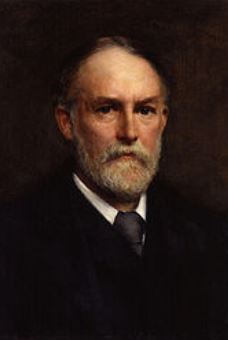
Frederick Myers (1843-1901)
Since science focuses on what can be physically verified, its truths are in principle accessible to all. Science is a lowest common denominator phenomenon – mind using what can be very sophisticated techniques to study matter. By restricting themselves to studying the tactile and physical, scientists examine the world like very intelligent babies. Becoming habituated to this mode of thinking déformation professionnelle leads many of them to nihilism since meaning and purpose, being invisible, are excluded from their purview.
Real babies, however, only exist because of love – one of the invisibles. Without love and affection most babies give up the will to live. Understaffed orphanages can have astronomical mortality rates for this reason. Those babies who survive are likely to suffer from attachment disorder and remain unassimilable to normal human society, having no interest in their fellow humans.24
Whatever the popularity and prestige of science, in real life mind cannot be ignored. Social existence means paying careful attention to the varying emotions and thoughts conveyed by faces, tones of voice and gesture. Far from being skeptical as to other people’s consciousness, close attention is paid to every nuance of an interlocutor. This ability to recognize human emotional states is highly developed by dogs in particular with whom humans have coevolved. Dogs, cats and humans relate to each other as conscious beings.
(c) The Four Quadrants
Ken Wilber locates interior subjectivity and individual consciousness in the top left-hand quadrant.25 Human consciousness is a collective phenomenon. Without culture (bottom left-hand quadrant) and the economic system that sustains it (bottom right-hand quadrant) humans cannot exist. So, to understand oneself it is necessary to study the cultural heritage of which a person’s individual mind is a part. Thoughts are influenced by the thoughts of others. Likewise, normally, the brain and mind are intricately related (top-right quadrant).
Mystics like Plato and Plotinus focus on interior subjectivity. Each person tends to have his favorite quadrant, but each quadrant influences the other. Brain and body influence mind – bottom up causation – and mind influences brain and body – top down causation. Individual minds exist within a cultural heritage that provides concepts, traditions, points of view, literature, poetry, music, art and philosophy. And those in turn are influenced by social institutions like the Church and economic practices.
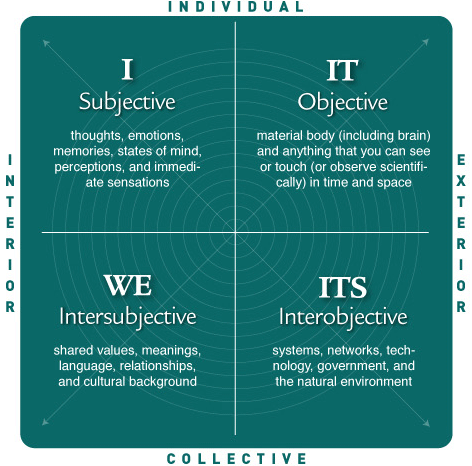 So consciousness at the level of mind exists in a social and cultural context which changes. Spiritual truth remains constant, but, as is frequently observed, each generation must rediscover those truths for itself. People use the concepts and points of view available to them. Without the process of rediscovery, coming to know and feel the truth, spiritual truth is in danger of becoming what William James calls a “dead option.”26 A commonly suggested example is the notion that it is no longer possible to believe in the existence of the Greek gods.
So consciousness at the level of mind exists in a social and cultural context which changes. Spiritual truth remains constant, but, as is frequently observed, each generation must rediscover those truths for itself. People use the concepts and points of view available to them. Without the process of rediscovery, coming to know and feel the truth, spiritual truth is in danger of becoming what William James calls a “dead option.”26 A commonly suggested example is the notion that it is no longer possible to believe in the existence of the Greek gods.
Thanks to the discovery of the Big Bang, Moderns know that the universe itself is evolving and this becomes a way of re-acknowledging the older organismic and animistic conception of the universe as alive and conscious expressed in Plotinus’ notion of the World Soul. Wilber points out that Plato’s Cave can easily be set in motion and depict the history of the universe as well as the path of individual growth.27 By making these minor adjustments it is possible to keep spiritual realities as live hypotheses.
One thing missing from Wilber’s picture is a quadrant of “You.” It is important that a distinction is recognized between the You who is not I. “We” is merely the plural of “I.” This provides a link to the Absolute, but “You” recognizes that you may have different desires and ambitions from me. Christianity emphasizes the I/Thou of the Relative, while Buddhism tends to focus on the We – all is one.
Part VI
René Girard
Part of the communality of human consciousness is its intensely mimetic (imitative) nature. Thoughts, attitudes, desires, points of view, beliefs and the language employed are all copied from other people. Even the desire to be original, if it exists in the individual, is mimetic. The possessor of this desire has copied it from the people around him. There is nothing original about wanting to be original. Thus, human consciousness is inherently communal. Without the shared aspect; without copying the speech and behaviors of others; someone is not really human at all – just a grunting animal who would possibly never discover the ability to walk on two legs.

René Girard (1923-2015)
Humans only exist as persons in relationship with others. Each person discovers who he is in connection with other people.
Epistemically, it can happen that the communal nature of human consciousness gets ignored or forgotten. The mind is the means by which we think. Each person is bequeathed ideas, concepts, modes of thought from others which are then used to think about, among other things, ideas, concepts and modes of thought. What is doing the studying is of a piece with the thing being studied. Philosophers are notorious for ignoring the self-reflexive implications of what they write, generating tears-inducing absurdities.
René Girard argues that human consciousness originated in the communal awareness generated by scapegoating.28 With the scapegoat mechanism, the violence that comes from imitating desires, wanting what other people want, is assuaged when an innocent victim is blamed for all the mutual antagonisms and murdered; thus, ending the conflict in cooperation. Fortunately, Judaism and most especially the Passion of the Christ brought the scapegoat mechanism to light. Jesus is the innocent victim murdered by an angry mob par excellence and the disciples served to counter the usual universal condemnation of the scapegoat. Unfortunately, this awareness has remained partial at best and with the fading popularity of Christianity, pagan scapegoating is enjoying a renaissance. Many people fail to recognize that bonding together over the shared hatred of anyone at all, from presidents, to criminals, to the physically handicapped, is to scapegoat.
Part VII
Faith and the True Myth
With regard to religious experience, if something falls outside a person’s range of experiences, he must take what other people say on trust and faith. For instance, if someone cannot do or understand calculus, he might still have faith that some people can do it and that it is a meaningful exercise.

Plato
Fortunately, there is something more than faith alone and that is anamnesis. That was Plato’s way of referring to the ability of some deep part of a person’s soul to recall aspects of reality encountered in the afterlife.29 Intuitive knowledge or sympathy for an idea means the idea resonates with an inner conviction that is a remembering. If someone is deaf to the call of the soul and demands tactile evidence, no further discussion is possible. Some things cannot be argumentatively proved but rest on testimony instead. God-given free will requires that some things be open to doubt.
At times, Plato used the concept of myth or story. He would write “this may not be exactly true, but something like this must be the case.” Consider the storyline in the movie Surrogates, where humans send robot surrogates to interact with the world for them.30 If a robot is harmed, no harm can come to its operator. The operator stays safe at home. Someone figures out how to kill the operator when he destroys the robot, causing a crisis in the social setup.
Likewise, it is the view of most religions that humans are spiritual beings having a temporary sojourn on Earth. This means that bodies and brains are an interface with the physical world. Like the human operator in Surrogates, the spiritual self cannot be harmed or killed. It is immortal.
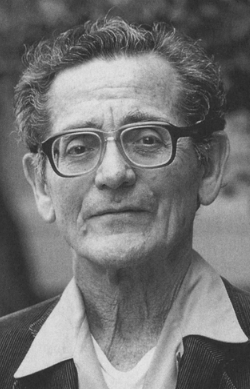
Benjamin Libet (1916-2007)
This transmission theory of mind suggests that consciousness exists in another non-physical atemporal dimension. A brain and body are necessary for us to interact and operate in the realm of the physical. The brain is thus like a radio receiver. It does not generate thoughts and trying to find the source of consciousness in the brain is no more realistic than attempting to find the source of music and speech in a radio. If the brain is damaged, then transmission is impaired.
The neuroscientist Benjamin Libet got experimental subjects to decide on their own when to press a button while hooked up to an electroencephalograph (EEG). He found that the conscious decision occurred 200 milliseconds before the finger moved. However, Libet also found brain activity 300 milliseconds before the conscious decision.31 This would make sense on the transmission theory of mind. The conscious decision of the soul is communicated to the physical realm via the brain. Libet suggested that there was time in those 200 milliseconds for the mind to veto the decision coming from what could be called the soul mind.
Part VIII
The Story of Er and the Meaning of Life According to St Stephen
The story of Er was reported in Plato’s Republic. Er was a soldier whose body was about to be burned on a funeral pyre when he suddenly woke up and reported his near death experience. He recounted that he was taken to a place of judgment and told to watch the proceedings. He saw souls coming from below the Earth and from Heaven. The former were care-worn, weary and stained from travel. They had spent a thousand years underground in punishment with murderers and tyrants. The latter were refreshed. After seven days the souls traveled to the Fates where they were to be assigned new lives as mortals. They could choose the kind of life they would lead. Some chose wisely, some did not. Before being reborn, the souls drank from the River of Lethe – Forgetfulness. In Afterlife Teaching From Stephen the Martyr, this is the description of the meaning of life:
Remember, that in the beginning there was the coming away from the Source for the correction of many disorders. Acquiring a physical body is only one stage in the corrections. To be in the physical is not always the most enviable stage, as just lately you may have learnt, but this I tell you: in this span of creation, the time or times in the state are of short duration, and, though important, are at the most very temporary. It is not surprising then that whilst you should be in this state the importance of comfort or happiness seen from the physical point of view is generally foremost in the mind of each soul. And yet the message that you have all been given, and which you must learn to hear with greater clarity, is the message of our Lord Jesus Christ [namely that] your physical well-being, your possessions, or lack of them, so important to you, are immaterial to your development. As the Lord said, you should neither be judged whether you be rich or poor, for neither state will qualify you for acceptance back to the Source.
“Blessed are the poor”, you have read, words said by the Lord. Do not misunderstand these words, as often is done. The state of poverty in itself does not make them blessed. It is their own mentality and thoughts they have in the state of poverty. You will find that the poor give as often as the rich do but because they have so little to give in material things they always give a larger percentage, more often than not all of what they have.
St Stephen the Martyr
Blessed are the meek for they shall inherit the earth.” For the same reason are they blessed, for they look down on no man and call him less, for they are meek. The gift of meekness is a gift indeed; therefore pray for the mighty, for they are not thus blessed. Each one elevated to the heights of government of kingdoms has always to accept and give the example of greatness. They may not be meek: therefore, to be rich in grace is doubly great. If we were to carry on and talk more and give more of these examples we could only come to one conclusion: that life in a physical body is from necessity difficult and undesirable. For it would be very hard to accept that when you have the least comfort, when you have the least position, you are greatly blessed and that when you have the most comfort and the higher position then prayers are needed more. It seems a contradiction in itself unless you understand that it is for this reason each and every one of you is in the position that you are for the reason that you may develop and that disorder may be corrected. Each is in the situation where he must learn, develop and correct disorder.
Section 6. God seen as the Surgeon operating on us while we live our “unconscious” lives on earth.
Stephen: Then you say, “Would it not be easier if the Lord our God were to make it very clear to us what the purpose is and what the working of that purpose is, and why and how, and when and whom?” You have asked questions like this, Olive. But think how a surgeon would act if, when he had to operate, he had to keep the patient conscious, adjust mirrors so the patient could see the operation that would be beyond his understanding in any case. Should he perhaps have each patient undertake advanced studies before an operation? Or would it perhaps not be better only to operate on a surgeon?
In actual practice the patient is treated and bathed and is given what medication he may need. He is clothed in a gown most suitable for access, and he is put in a place most suitable for the operation. He is kept in a state so that no pain more than he can bear will be administered to him. When the operation is completed and the wound is healed and the disorder is corrected then the patient may arise and even discuss the disorder and sickness with the surgeon and learn from him. This must be the order of things, therefore, that the patient must trust his surgeon and carry out his instructions regarding what the patient must know or do or, rather, not do. Likewise the patient must love his Lord God with all his heart and all his soul; he must trust his God as he trusts his surgeon, for when he comes to the operating table he is by his own choice made unconscious of the things that are about to happen. Even if he were a surgeon himself he would still be unconscious at the time of the operation. Even though in consciousness he would know what has to be done and how it should be done by his own choice he would choose the unconsciousness, for he would know that without this the operation would not be possible. So, therefore, you must trust your surgeon, have faith in his skill, place yourself in his hands and love him.
Furthermore we must all love one another for we are part of the one body; there is no separateness. To hate someone, dislike someone, is to hate or dislike yourself and to hate and dislike your God. There is no one, no soul beneath your love; for there is not one soul that should not give you love and not one soul that you should not receive love from. Therefore, the second of your duties is to love yourselves, for you are a part of God and He of you. Love each other; give to each other, for in giving you are receiving. The physical is only temporary; providing you do these two things then no state of mind or physical welfare is material to your progress. Your true reward for loving each other is to receive the love of each other, and the love of God. Understand and give only this, and you will find that each time that you do this the wound of your operation will heal a little more; each time that you do this, consciousness which you lack now will begin to return. This is the way that the answers will come to you, to heal the wound and return to the consciousness. Therefore love much.
When you are gone from this place, when you are done with these bodies, physical, mental, ethereal and all others, then you will be back with the Source, and it will be of no mind.
(Same session) You will forgive me for my serious talking this night for it is not often that I have the opportunity to discuss these things with you alone. Remember that mothers never tend to be less wise than their children are for, because of their development not in age but in experience, their wisdom grows and you will generally notice a calmness and an acceptance of life. Look upon the aged and those older than you and you will find that you are looking upon yourself when a number of your own mis-arrangements have been corrected. Think of the acceptance, notice the calmness; this is a message. Do not expect the aged to be clever, for cleverness most times is a barrier to the healing. Cleverness often, as I have said, stops loving. Intelligence is a disability; this is why I am often amused when Tom accuses me of cleverness for I discarded cleverness many ages ago. I must depart now. Thomas is tired. God bless you all; pray for me and also for those in greater need of your prayers than yourselves or myself.32
Part IX
Conclusion
The mysteries of existence include why there is something rather than nothing, the emergence of living organisms, and consciousness. Each person represents an unbroken chain of life reaching back to the first cell. Since cells are unfathomably complicated and manufacture a wider range of products than all of human manufacturing put together, all on a microscopic level, their existence seems profoundly unlikely. The emergence of living cells if imagined to be by chance, would be analogous to a tornado driving through a junkyard and assembling a fully functioning 747, including every rivet, electronics, miles of wiring and computer systems.
Humans find themselves to be alive, conscious and confronting a universe which is poorly understood. Physicists claim that ninety-six percent of the universe consists of dark matter and dark energy, both of which are just placeholders awaiting further discoveries.
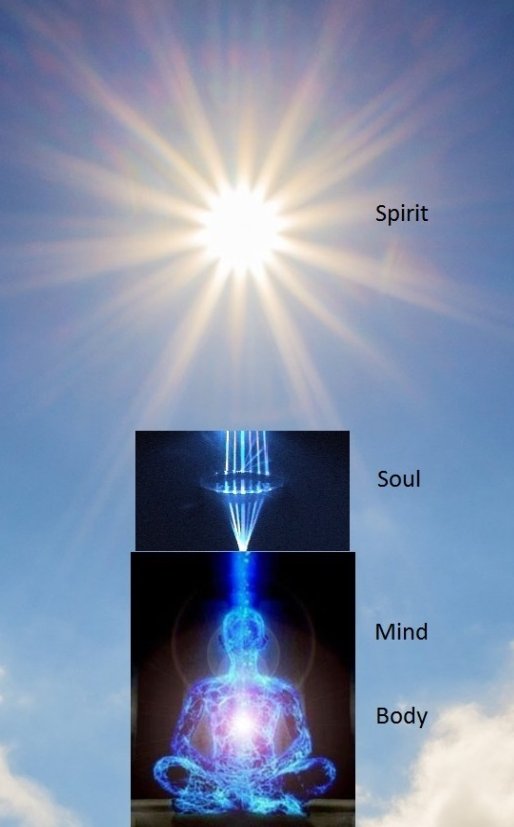 Materialists posit consciousness as something emerging from brains or, if brazen enough, try to deny that consciousness exists at all. Some even deny the existence of life; claiming that it is a poorly defined concept and that all definitions of life are unsatisfactory because some computer programs share the characteristics of life so defined.
Materialists posit consciousness as something emerging from brains or, if brazen enough, try to deny that consciousness exists at all. Some even deny the existence of life; claiming that it is a poorly defined concept and that all definitions of life are unsatisfactory because some computer programs share the characteristics of life so defined.
In those two cases, materialists are willing to simply deny the two most important features of any human being. One, that the person is alive. Two, the person is conscious. Being dead or in a permanent coma spell the end of existence in this world as we know it.
Some materialists are willing to take these drastic steps because they intuit that consciousness and God are connected. Though normal human consciousness is but a trickle of Mind at Large, the connection is retained and can be experienced in moments of grace.
NDEs prove that human consciousness continues when the brain is not functioning. Brain plasticity, hydrocephalus and a normally functioning mind when one hemisphere is removed, mean that coming to understand human minds by examining brains seems unlikely.
The evidence favors the transmission theory of mind, that the brain, nervous system and sense organs function more like a radio, picking up signals and thoughts from another dimension rather than generating thoughts. Placebos and nocebos point to top down causation and mind over matter.
Human consciousness is but a ripple on a wider ocean of thought. Brains and bodies are normally necessary as interfaces with physical reality, but NDEs show that the link can be broken. Likewise, a person with ninety-five percent of his brain missing can exhibit above average cognitive abilities. Consciousness permeates the universe and according to Plato, Plotinus, the Buddhists and others, is more fundamental than matter.
 – Adj. Prof. Richard Cocks teaches philosophy at SUNY Oswego. Originally from Christchurch, New Zealand, he is presently based in the United States. Dr. Cocks is an editor and regular contributor at the Orthosphere and has been published at The Brussels Journal, People of Shambhala, The John William Pope Center for Higher Educational Policy and the University Bookman.
– Adj. Prof. Richard Cocks teaches philosophy at SUNY Oswego. Originally from Christchurch, New Zealand, he is presently based in the United States. Dr. Cocks is an editor and regular contributor at the Orthosphere and has been published at The Brussels Journal, People of Shambhala, The John William Pope Center for Higher Educational Policy and the University Bookman.
Endnotes:
- Rupert Sheldrake, Science Set Free (Penguin Random House, 2013) p. 200.
- See for background: Roger Lewin, “Is Your Brain Really Necessary?” Science No. 210 (12 December 1980). [SydneyTrads: consider also the 2007 case of a 44 year old French man, who, while having most of his brain consumed by ventricular enlargements, was still able to live with “normal social functioning”. See for further information: Lionel Feuillet, Henry Dufour and Jean Pelletier, “Brain of White-Collar Worker” The Lancet Vol. 370 No. 9583 (21 July 2007) [DOI:10/1016/S0140-6736(07)61127-1]]
- Moheb Constandi, Neuroplasticity (The MIT Press, 2016).
- Ju Lu, Juan Carlos Tapia, Olivia L. White and Jeff W. Lichtman, “The interscutularis muscle connectome” Public Library of Science Biology (10 February 2009) [DOI:10.1371/journal.pbio.1000032].
- Robert Ader and Nicholas Cohen, “Behaviorally Conditioned Immunosuppression” Psychosomatic Medicine Vol. 37 No. 4 (July-August 1975).
- Irving Kirsch, “Antidepressants and the Placebo Effect” Zeitschrift Fur Psychologie Vol. 222 No. 3 (2014) [DOI:10.1027/2151-2604/a000176].
- Pim van Lommel, Consciousness Beyond Life – The Science of Near Death Experience (Harper Collins, 2010).
- Ibid. p. 23 ff.
- Oliver Sacks, An Anthropologist on Mars (Vintage 1, 1996).
- Pim van Lommel, op. cit. p. 115.
- Ibid. p. 127 ff.
- Ibid. pp. 169-170.
- Ibid. p. 162.
- Ibid. p. 165.
- Ibid. p. 164.
- Ibid. p. 145.
- Ibid. p. 163.
- Ibid. p. 145.
- Edward Kelly and Emily Kelly, Irreducible Mind (Rowman & Littlefield Publishers, 2006) p. 110.
- Ibid.
- Aldous Huxley, The Doors of Perception (Harper Perennial Modern Classics, 2009) p. 6.
- Edward Kelly and Emily Kelly, op. cit. p. 80.
- Patricia K. Kuhl, “Brain Mechanisms in Early Language Acquisition” Neuron Vol. 67 Issue 5 (9 September 2010); Gail Gross, “Your Baby’s Brain, Part 3: Windows of Opportunity” Huffington Post (blog) (12 September 2014 @ 11:21 ET; updated 12 November 2014) <huffingtonpost.com> (accessed 26 April 2017).
- Tara Bahrampour, “Romanian orphans subjected to deprivation must now deal with dysfunction” Washington Post (online) (30 January 2014) <washingtonpost.com> (accessed 26 April 2017).
- Mark Michael Lewis, “Ken Wilber and the Foundation for an Integral Science” Rational Spirituality (online) (undated) <rationalspirituality.com> (accessed 26 April 2017).
- William James, “The Will to Believe”, Address to the Philosophical Clubs of Yale and Brown Universities, republished in The New World (June 1896) § 1.
- Ken Wilber, A Brief History of Everything (Shambhala Publications, 1996) pp. 228-229.
- René Girard, The One By Whom Scandal Comes (Michigan State Press, 2014) p 12.
- Plato, Phaedo § 73.
- “Surrogates” (Director: Jonathan Mostow; Writers: Michael Ferris, John Brancato and others; Released on 24 September 2009).
- Sheldrake, op. cit. p. 123.
- Michael Cocks, Afterlife Teaching From Stephen the Martyr (White Crow Books, 2011) pp 11-12.
Schedule:
Plate 1
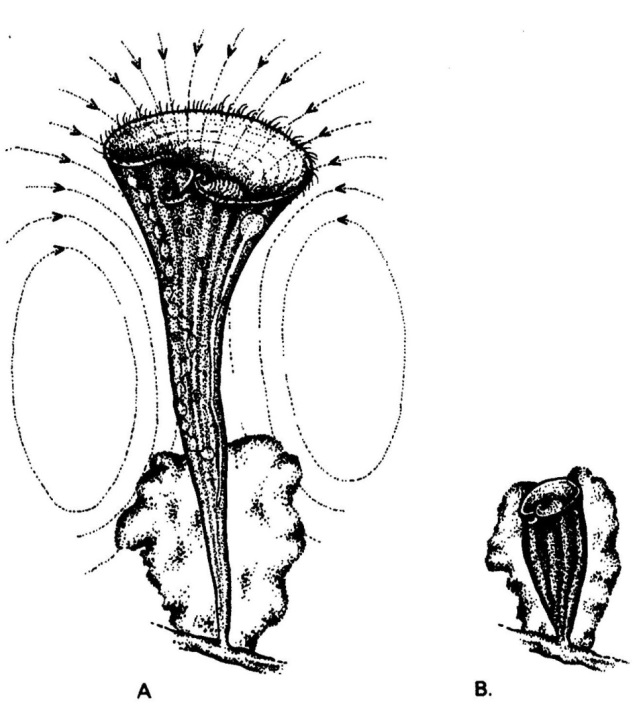
The single-celled organism Stentor raesilii, showing the currents of water around it caused by the beating of its cilia. Image courtesy of Rupert Sheldrake, op. cit. p. 201 (Fig. 7.1A)
Plate 2
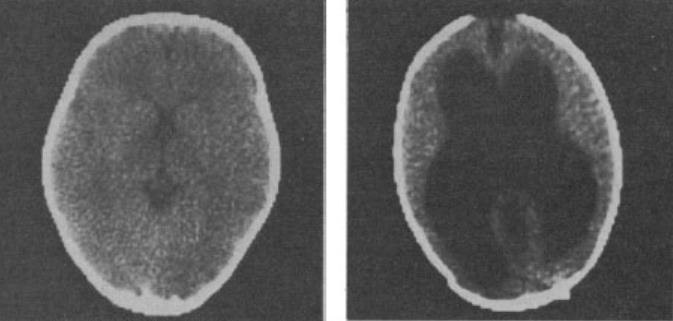
Scans of normal and hydrocephalic brains. A horizontal scan across the brain shows the ventricles as narrow slits in a normal individual and larger cavities in a hydrocephalic patient. Image courtesy of Roger Lewin, op. cit. p. 1233.



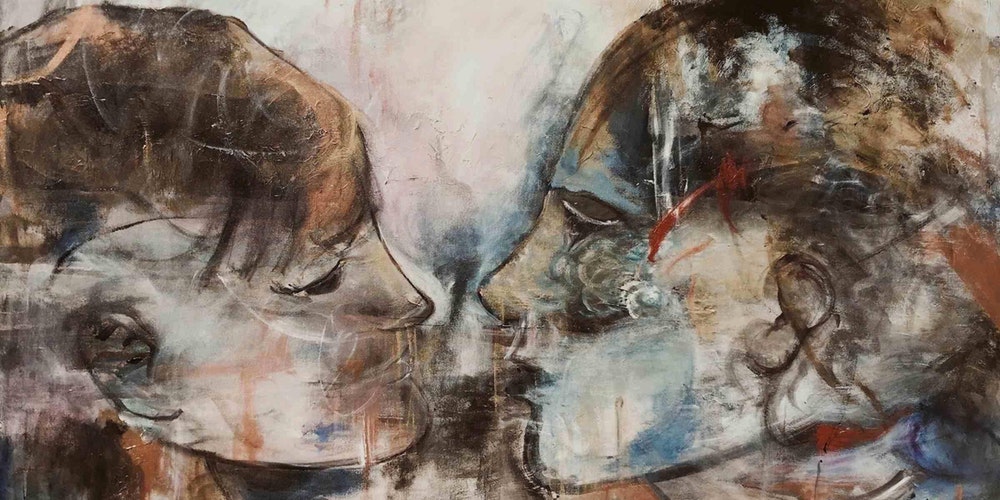
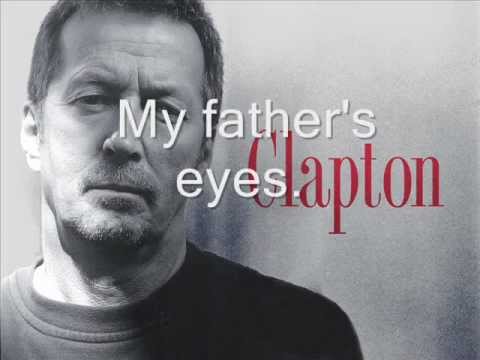

Much of this is derivative of Advaita Vedanta. Aldous Huxley and Ken Wilber in particular were strongly influenced by Advaita Vedanta ideas of consciousness.